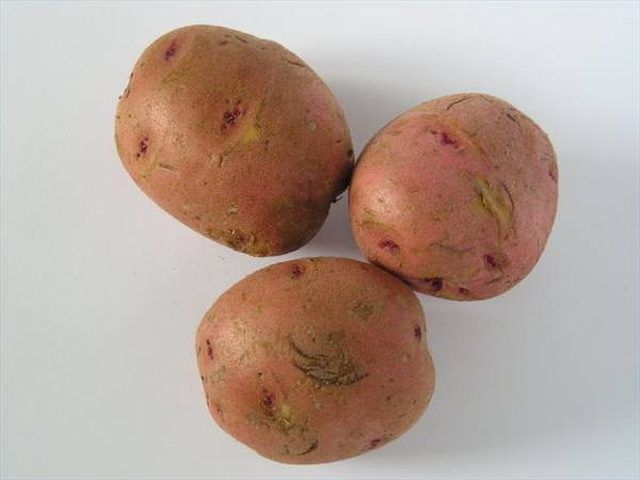Bulbs
Flower Basics
Flower Beds & Specialty Gardens
Flower Garden
Garden Furniture
Garden Gnomes
Garden Seeds
Garden Sheds
Garden Statues
Garden Tools & Supplies
Gardening Basics
Green & Organic
Groundcovers & Vines
Growing Annuals
Growing Basil
Growing Beans
Growing Berries
Growing Blueberries
Growing Cactus
Growing Corn
Growing Cotton
Growing Edibles
Growing Flowers
Growing Garlic
Growing Grapes
Growing Grass
Growing Herbs
Growing Jasmine
Growing Mint
Growing Mushrooms
Orchids
Growing Peanuts
Growing Perennials
Growing Plants
Growing Rosemary
Growing Roses
Growing Strawberries
Growing Sunflowers
Growing Thyme
Growing Tomatoes
Growing Tulips
Growing Vegetables
Herb Basics
Herb Garden
Indoor Growing
Landscaping Basics
Landscaping Patios
Landscaping Plants
Landscaping Shrubs
Landscaping Trees
Landscaping Walks & Pathways
Lawn Basics
Lawn Maintenance
Lawn Mowers
Lawn Ornaments
Lawn Planting
Lawn Tools
Outdoor Growing
Overall Landscape Planning
Pests, Weeds & Problems
Plant Basics
Rock Garden
Rose Garden
Shrubs
Soil
Specialty Gardens
Trees
Vegetable Garden
Yard Maintenance
How to Plant Red Potatoes
How to Plant Red Potatoes. A truly versatile plant, the red potato can be cooked in numerous ways for a multitude of flavors. Luckily, the red potato, like most potatoes, is exceptionally easy to grow and care for. Growing potatoes is great for beginning gardeners and advanced experts alike. Nothing can be simpler than digging a hole and dropping a...

A truly versatile plant, the red potato can be cooked in numerous ways for a multitude of flavors. Luckily, the red potato, like most potatoes, is exceptionally easy to grow and care for. Growing potatoes is great for beginning gardeners and advanced experts alike. Nothing can be simpler than digging a hole and dropping a potato in. While you'll have to wait for the secret bounty which lies beneath the surface, the ease of maintenance far outweighs the time it takes for new potatoes to grow and mature.
Things You'll Need
Shovel
Hoe
Nutrient rich soil or compost
Seed potatoes
Row markers or sticks
Bud your seed potatoes. Keep each potato separate or in a single layer in a bright sunny place.
Thoroughly loosen and turn the soil in the potato's garden bed. Add additional soil or compost and integrate it into the bed. Break up large clods of dirt and remove any rocks or weeds.
Form an 8-inch deep, 2-inch wide trench with the hoe. Leave 10 to 14 inch row intervals and 2 to 3 foot side intervals between potato rows.
Place seed potatoes in the trench one at a time, 12 inches apart.
Cover over the potatoes with about 2 to 4 inches of soil from the sides of the trenches. Mark each potato's place with a plastic row marker or by anchoring a stick upright in the ground.
Water your potatoes regularly as you do the rest of your vegetable garden and wait for sprouts to push through the soil.
When your potato sprouts are 2 to 4 inches tall, cover the plants lightly with garden soil or compost.
Harvest "new" potatoes when the plants bloom. Wait until the leaves turn yellow and the plant starts to die back in the fall to harvest fully mature potatoes.
Tips & Warnings
Usually more "eyes" on the potato means more small potatoes and fewer eyes means you will grow larger but fewer potatoes. You can cut seed potatoes into pieces and plant the individual piece provided you leave two to three eyes on each piece and let the cuts heal for a day before planting.
If space is an issue potatoes can be grown in tires. Simply stack two tires over one another and fill with good garden soil. Plant your potato and wait for it to come up. Instead of cover the plant with soil to encourage growth, add another tire and fill in the area completely. The potato plant will emerge from this soil as well and make potatoes all the way up the tower as it grows. Continue as high as seven tires. At harvest time, slowly remove the tires one at a time and easily collect the potatoes.
Potatoes can take a long time to peek out of the ground. Keep careful watch on the area and look for small, tight, dark green buds poking up in the vicinity of your marker. Do not dig or disturb this area until your potatoes have turned into plants.